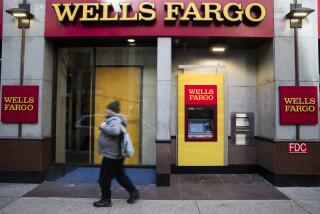Midyear Investment Review and Outlook : Savers’ Yields Rise, And There’s More to Come
- Share via
For Americans who are more savers than investors, revenge has been sweet this year.
The Federal Reserve Board’s decision to begin boosting short-term interest rates on Feb. 4 has substantially raised returns on most savings vehicles, while wrecking stock and bond markets.
The average seven-day compound yield on money market mutual funds is 3.71% now, up one full percentage point from year’s end.
Though that yield still is relatively low, you’ll earn 36% more interest at today’s money fund yield than at the year-end yield.
Savers dependent on bank certificates of deposit haven’t benefited as much, because banks have been slow to raise CD yields. The national average yield on six-month CDs, now 3.33%, is up 20% this year, according to Bank Rate Monitor newsletter in North Palm Beach, Fla.
How much more can money fund and CD rates rise? Most money fund yields have caught up with the Fed’s last rate hike (in late May), experts say. So “if the Fed does nothing else to rates, we’re at the top” for now in fund yields, says Edward Wiese, manager of the T. Rowe Price Prime Reserve money fund in Baltimore.
Banks could boost CD rates more, depending on how much they need deposits. But any increases in the near term are likely to be minor, experts say.
That doesn’t mean the saver is doomed to scrape by with these still-low yields forever. If the global economy expands as expected in the second half of this year and into 1995, many Wall Streeters see short rates rising again.
Wiese expects the Fed to further tighten credit later in the second half, which should translate into money fund yields above 4% by the end of the year, he says.
A continuing weak dollar could force the Fed’s hand sooner, maybe even this week. But most experts think the most the Fed will do for the dollar is boost the official “discount rate.” That would be symbolic, though: When the Fed is serious about pushing rates, it uses the “federal funds” rate, which is what banks charge each other for short-term loans.
*
As happy as savers may be with rising short rates, keep perspective. After taxes and inflation, you’re earning little or nothing. That’s why, in the long run, everyone needs some form of true investment (like stocks); short-term accounts are for your cash “cushion” and money you just can’t lose.
One idea for yield-hungry savers: Lock in the current 5.5% yield on one-year U.S. Treasury bills. One-year bank CDs pay far less, and money fund yields would have to rise more than 1.8 points over the next 12 months to beat the T-bill return. Most Wall Streeters doubt the Fed will have to be that aggressive.
“The odds of money funds yielding more than 5.5% a year from now are very low,” says Walter Frank, chief investment officer for money-fund tracker IBC/Donoghue in Ashland, Mass.
More Bang for Short-Term Bucks
How yields on some short-term savings vehicles have jumped since the beginning of the year.
Taxable money fund average
Jan. 1: 2.72%
July 1: 3.71%
*
3-month T-bill:
Jan. 1: 3.06%
July 1: 4.30%
*
6-month bank CD average:
Jan. 1: 2.79%
July 1: 3.33%
*
1-year T-bill:
Jan. 1: 3.59%
July 1: 5.51%
*
Source: IBC/Donoghue’s; Bank Rate Monitor
More to Read
Inside the business of entertainment
The Wide Shot brings you news, analysis and insights on everything from streaming wars to production — and what it all means for the future.
You may occasionally receive promotional content from the Los Angeles Times.










